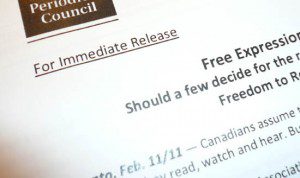
I recently took a call from a Humber College student. She asked if I was a working journalist. When I informed her that I both wrote and taught, she asked if I could help her with an essay she was researching. In her studies, one of her instructors had directed her to answer this question:
“Can public relations people get along with journalists? And conversely, can journalists get along with PR people?”
“It depends,” I told her on the phone.
And we agreed to meet for an interview. She would ask me questions about how journalists deal with PR officials and I agreed that I would think about the other side of the coin – how the world of public relations copes with journalists. I warned her (as I warn you), my view has always been that too often public relations spokespeople “spin” the truth. Some call it “going over to the dark side.”
One classic “spin” case, as revealed by the CBC’s Fifth Estate in 1992, had the Kuwaiti government hiring the international public relations firm Hill & Knowlton to have Nayirah al-Sabah, a 14-year-old Kuwaiti girl, testify before the U.S. Congress in 1990 that invading Iraqi troops had committed atrocities (including the killing incubating babies). The CBC discovered later that the girl’s claims were wildly exaggerated and that the testimony was staged to help validate the U.S. invasion of Kuwait to push back the Iraqis. But by then the story had gone viral, as it were, and far too many people believed the baby massacre to be true.
I’ve always thought the ideal relationship between journalists and public relations people is a symbiotic one. PR representatives want the message of their employer or client to get out there in the public eye. And reporters need raw stories from which to compose their news pages, human- interest sections or editorials. Journalists and PR types will agree “there’s nothing new under the sun,” but if a press release with just the right potential angle arrives on the journalist’s desk at precisely the right time, at least an interpretation of the press release gets published and the reporter meets another deadline with a different take on an old story idea.
Then the Humber College PR student asked: “Why do journalists always paint such a dark picture of things?”
I asked why PR people always seem to be protecting their clients. We agreed that suspicious journalists and protective public relations people were simply doing their jobs.
She asked if I thought there were any positive PR stories. I reminded her of the classic case study of the Tylenol crisis. In 1982, seven people in Chicago died from taking Tylenol capsules laced with cyanide. Almost immediately, James Burke, the president of Johnson & Johnson (creator of Tylenol) had every vial of the drug removed from shelves. Manufacture and distribution were halted. The company promised full co-operation with government investigators. Tylenol share of the market dropped to six per cent overnight. But its forthright and immediate response propelled the product back to the top of the marketplace within a year.
Then I offered a negative example – one I myself had witnessed. Sometime in the early 1980s, I had gone to the central Alberta town of Lodgepole to investigate a sour-gas well blowout. Rumour suggested the well had been destroyed, noxious gas was spewing everywhere and there was little hope of stopping the flow. When I arrived in the town I immediately checked with the oil company that owned the well.
“Everything’s under control and there’s no danger,” the oil company PR person had told me. “And we have contingencies to deal with any problems.”
The answer sounded a bit too pat. So I checked with the mayor’s office.
“Everything’s under control and there’s no danger,” the mayor told me. “And we have contingencies.”
I was getting nowhere; so I went to the RCMP detachment.
“Everything’s under control and there’s no danger,” the police media spokesman said.
I felt as if I’d walked into an episode of the Twilight Zone. Clearly, the oil company PR people had gotten to everybody and given them a script for media questions. I almost gave up, until I bumped into two guys driving a compactor semi-trailer truck; they had driven from Washington State to get to Lodgepole to use their machine to plug the well with mud. They had been to the site, but they had not been briefed by the PR people. They told me what was really happening at the well. It wasn’t quite as pretty as the three officials had characterized it. And I got a complete scoop on the air the next day.
The lesson, I suggested to the Humber PR student, was that neither reporters nor PR people work on the dark side if they try to use honesty.
My mom went to see you up in Lindsay when you were speaking there, says you were enjoyable! Just thought I’d let you know, I’m her son, Timber Masterson, a writer myself, http://www.timbermedia.com
That’s quite an achievement/accomplishment about your 20 year column, that’s the ticket old boy!